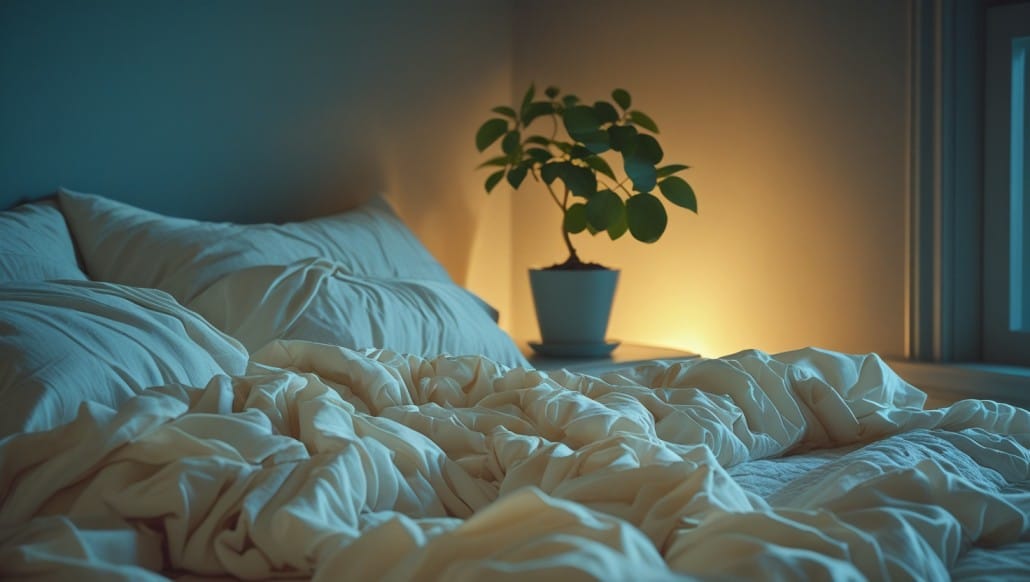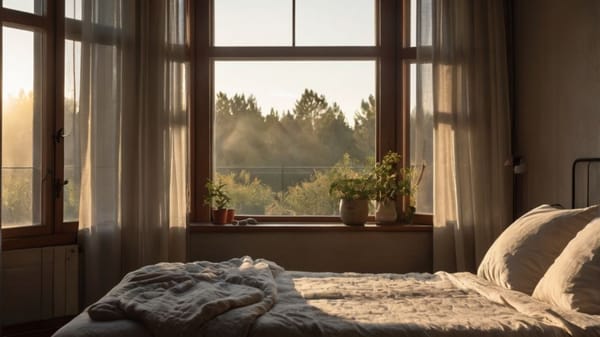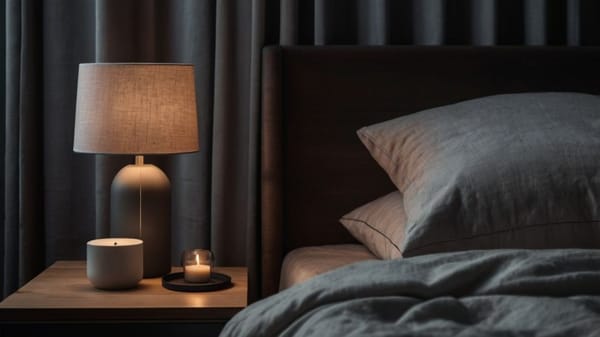How to Build a Nighttime Routine That Supports Deep Sleep
Build a nighttime routine that trains your body for deep, energizing sleep—boost recovery, focus, and energy with easy, science-backed steps.

What if better sleep wasn’t about going to bed earlier, but about training your body to crave rest? Deep, high-quality sleep—the kind that supercharges your energy, focus, and recovery—starts hours before you hit the pillow.
When you build a smart nighttime routine, you don’t force sleep—you invite it. Here’s how to design an effortless evening ritual that primes your brain and body for deep, natural sleep night after night.
Set a Clear "Off Switch" for Your Day
Deep sleep doesn’t happen when your mind is still racing. You need a clean break between the momentum of your day and the stillness of your night.
Start by establishing a hard cutoff for high-stimulation activities: work, emails, scrolling social media, even intense conversations. Ideally, this cutoff happens at least an hour before your planned bedtime.
Why does this matter? Because every decision, every unfinished task, every lingering notification keeps your cortisol levels elevated. High cortisol blocks melatonin, the hormone that signals your body it’s time for sleep.
If you don't actively wind down, your brain stays locked in a cycle of hyperarousal that delays sleep and fragments deep sleep stages later in the night.
The fix is simple but non-negotiable: create a ritual that signals "the day is done." Close your laptop. Power down your phone. Jot down a quick to-do list for tomorrow to offload mental clutter.
Even a few minutes of breathing exercises or light journaling can create a strong mental boundary that teaches your brain it’s safe to shift gears.

Make Light Your Ally, Not Your Enemy
Light isn’t just a background factor—it’s the main control panel for your biological clock. Ignore it, and you’ll fight your own physiology every night.
Bright, blue-enriched light—like the kind blasting from your phone, laptop, or overhead LEDs—tells your brain it’s still midday, no matter what the clock says.
This suppresses melatonin production and pushes your sleep cycle later, making it harder to fall asleep, stay asleep, and reach those critical deep stages that repair your muscles, boost your immune system, and reset your brain.
Here’s how you shift the odds in your favor:
- Dim the lights an hour before bed. Use lamps instead of overhead lights. Choose warm, low-intensity bulbs that mimic the natural dimming of the sun.
- Cut screen exposure aggressively. Ideally, shut down devices an hour before sleep. If you must use screens, blue-light-blocking glasses can help—but they’re not a perfect fix. Real darkness wins.
- Get natural morning light. Exposure to bright natural light early in the day strengthens your circadian rhythm, making it easier to fall asleep at night. Even a 10-minute walk outside after waking up creates a stronger "wake-sleep" divide in your brain.
Light is powerful. Master it, and deep sleep becomes a whole lot easier.
Create a "Wind-Down Window" You’ll Actually Stick To
You can’t slam the brakes on your nervous system at will. It needs time to transition from alertness to rest.
A "wind-down window"—a dedicated block of time where you deliberately slow your pace—helps smooth that transition. This isn’t about ticking off a checklist.
It’s about building a calming, predictable pattern that your body starts to recognize automatically.
Here’s what works:
- Gentle movement. Think light stretching, yoga, or foam rolling. Moving slowly helps shift your nervous system into parasympathetic (rest-and-digest) mode, essential for deep sleep.
- Breathing exercises. Deep, slow breathing taps into the vagus nerve, dialing down stress responses. A simple method: inhale for four counts, exhale for six. Repeat for five minutes.
- Mindful rituals. Reading a physical book (preferably something non-stimulating), sipping herbal tea, journaling, or even practicing gratitude. Choose activities that are low-stimulation but positive.
Studies from the American Psychological Association show that ritualized behaviors—even simple ones—lower stress and improve sleep onset time. Over time, your wind-down window will become a powerful, self-reinforcing habit.
Optimize Your Bedroom Like a Pro
Your bedroom isn’t just where you sleep. It’s where your brain decides whether it’s safe to sleep deeply—or stay on guard.
Think of your sleep environment as a tool. Dial it in properly, and you’ll fall asleep faster, stay asleep longer, and spend more time in the physically restorative deep sleep stages (especially NREM Stage 3).
Focus on these levers:
- Temperature. The ideal sleep environment is cooler than most people realize—around 60–67°F. Your body’s core temperature needs to drop to initiate deep sleep, and a cool room makes that biological shift easier.
- Darkness. Even small amounts of ambient light can suppress melatonin and fragment your deep sleep. Blackout curtains, eye masks, and removing unnecessary electronics all help create true darkness.
- Noise control. Sound can pull you out of deep sleep even if it doesn’t fully wake you. Use a white noise machine or fan to create consistent background noise and buffer against sudden disturbances.
- Minimalism. Clutter stresses your brain out. Keep your bedroom clean, simple, and reserved for two things only: sleep and intimacy. If it doesn’t support relaxation, it doesn’t belong there.
Investing a little energy into your bedroom setup pays off every single night.
Sync Your Sleep and Wake Times (Even on Weekends)
Consistency isn’t sexy, but it’s insanely effective.
When you go to bed and wake up at the same time every day, you lock in your body’s circadian rhythm.
This strengthens your sleep architecture—especially your deep sleep cycles—making your nights more restorative and your mornings less brutal.
Irregular sleep schedules, on the other hand, cause "social jet lag," where your body’s internal clock and the outside world fall out of sync. You feel groggy, sluggish, and less mentally sharp, even if you technically got "enough" sleep.
Here’s the move:
- Anchor your wake-up time. Pick a consistent time to get up, seven days a week. Wake time is the most powerful circadian cue you control.
- Let bedtime adjust naturally. If you’re not tired yet at bedtime, use your wind-down window to signal your body it’s time to slow down, rather than forcing it. Over time, your natural sleep drive will catch up.
After a few weeks, you won’t just fall asleep easier—you’ll start waking up before your alarm feeling clear, energized, and ready to go.
Upgrade Your Evening Mindset
Last, but critical: don’t treat sleep as a chore. It’s not something you "have" to do. It’s one of your most potent performance enhancers.
Approach your nighttime routine as a high-leverage opportunity, not another obligation. Celebrate small wins. Notice how much better your body feels, how much sharper your mind is, how much smoother your mornings become.
That positive feedback loop reinforces the habit without requiring "willpower" every night. Sleep becomes your secret weapon—not a nagging responsibility.
Final Thoughts
Building a nighttime routine that supports deep sleep isn’t about perfection. It’s about creating an environment where your body wants to fall asleep, naturally and effortlessly.
Master your light exposure. Set a clear cutoff for daily stimulation. Build a wind-down window you love. Optimize your bedroom to work for you. Stay consistent with your schedule. Most importantly, treat your sleep like the weapon it is.
Better energy, sharper focus, faster recovery—it’s all within reach. You don’t need fancy tools. You just need to start. Start tonight. Your future self will thank you.




